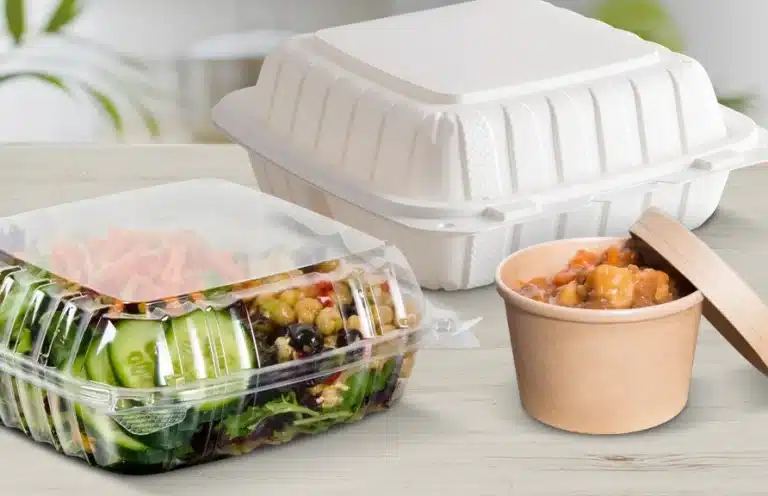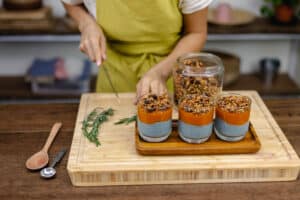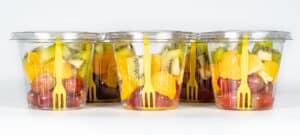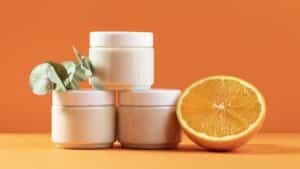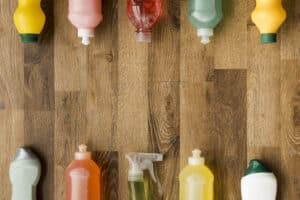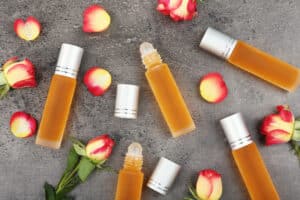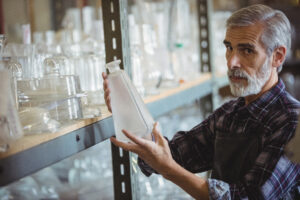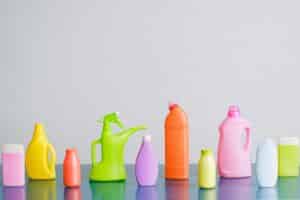In today’s fast-paced world, convenience is a driving force in all aspects of our lives. And, this is equally true when it comes to our food choices. From supermarket shelves to our refrigerators, we find food packaged in plastic.
Food packaged in plastic might have its critics, but let’s face it— it’s changed the way we eat. From keeping food fresh for longer to making sure it’s safe to eat, plastic packaging has its perks. So, let’s dig a little deeper and see how plastic helps keep our food tasty, accessible, and convenient.
Food packaged in plastic: trend in 2024?
In 2024, plastic packaging continues to be a cornerstone of the food industry. Even though people are talking more and more about eco-friendly options, plastic is still a dominant force thanks to its undeniable benefits. Think about it— almost three-quarters of all food packaging around the globe is still plastic! Also, it’s estimated that plastic will account for over 70% of food packaging materials globally this year. That shows it’s not going anywhere anytime soon.
Advantage of food packaged in plastic
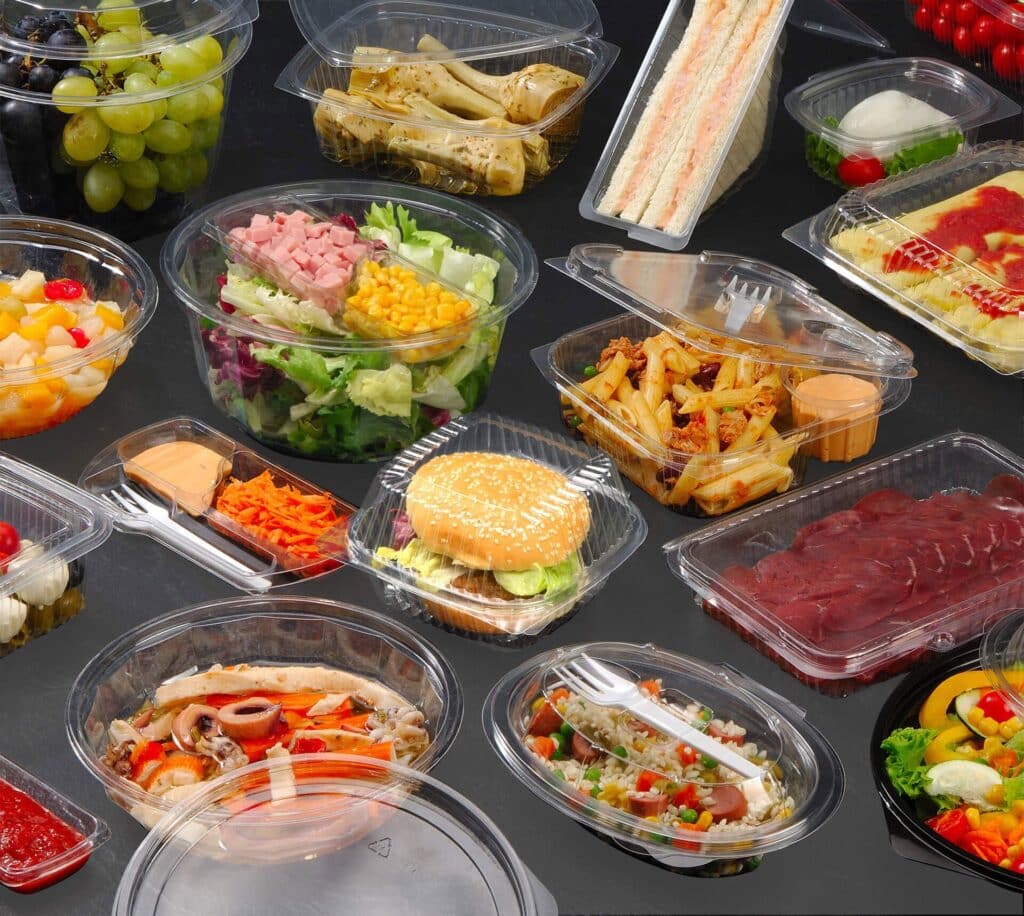
So, let’s take a closer look at the benefits of food packaged in plastic and how it makes our food experiences easier and more enjoyable.
- Preservation: Plastic acts as a solid barrier against external elements like air, moisture, and bacteria. Therefore, it helps preserve the freshness and quality of food. Also, this extends the shelf life of products. In turn, it reduces food waste and ensures consumers have access to safe and wholesome food for longer periods.
- Protection: Plastic packaging keeps food safe from bumps and scratches during travel and handling. It stops dirt and germs from getting in and ensures it arrives at the store fresh, no matter how far it has to go.
- Convenience: Plastic packaging is light and bendy, making it easy for companies to use and for people to carry. It comes in different shapes and sizes, so it can hold different kinds of food. Plus, food packaged in plastic is simple to use, store, and throw away, which helps everyone from the farm to your table.
- Hygiene: Plastic packaging keeps food clean and safe. It stops dirt and germs from touching the food inside. This is helpful for food that spoils quickly, like milk or pre-made salads.
- Cost-effectiveness: It is also a budget-friendly choice for food companies. It’s light, which means it’s easy to ship. Plus, it’s easy to make, so it doesn’t cost a lot to produce. These savings can then be passed on to you, the shopper, making food more affordable for everyone.
- Innovation and versatility: Plastic packaging evolves with advancements in technology. New materials and designs offer improved functionality, such as resealable features, tamper-evident seals, and modified atmosphere packaging (MAP) that extends the shelf life.
Types of plastic for food packaging
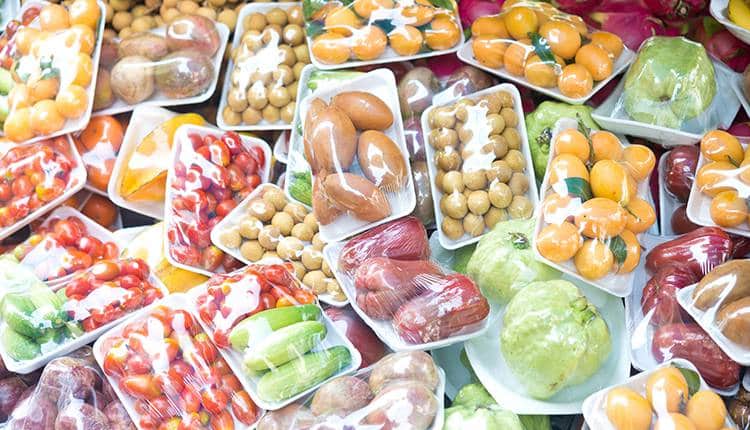
When it comes to food packaging, not all plastics are created equal. Different types of plastic offer different levels of protection, barrier properties, and suitability for specific food items.
Polyethylene Terephthalate (PET or PETE)
- Common uses: Clear bottles for water, soft drinks, and juices
- Advantages: Excellent clarity, good moisture, and gas barrier, shatter-resistant, lightweight, and recyclable
High-Density Polyethylene (HDPE):
- Common uses: Milk jugs, juice bottles, yogurt containers, some cereal box liners
- Advantages: Strong, rigid, good moisture barrier, resistant to chemicals, and recyclable
Low-Density Polyethylene (LDPE):
- Common uses: Flexible bags for bread, produce, and frozen foods; squeezable bottles
- Advantages: Flexible, moisture-resistant, good for heat sealing, and often recyclable
Polypropylene (PP):
- Common uses: Yogurt cups, margarine tubs, microwaveable food containers, some bottle caps
- Advantages: Heat-resistant, strong, good moisture barrier, and recyclable
Polystyrene (PS):
- Common uses: Egg cartons, foam food trays, disposable cups, and cutlery
- Advantages: Lightweight, good insulation properties, but recycling can be challenging
Choosing the right plastic type

Picking the perfect plastic for packaging your food isn’t just about grabbing the first container you see. It’s a bit like choosing the right outfit for different weather— you need something that fits the situation! Different foods have different needs, and the plastic you choose can make a big difference in how fresh and safe your food stays.
So, what should you think about when you’re picking out plastic packaging?
- Food type: Just like you wouldn’t wear a raincoat on a sunny day, you wouldn’t want to put juicy berries in a container that lets air in. Some foods need to stay dry, some need to breathe a little, and others need to be kept away from light.
- Shelf life: If you’re packing a picnic lunch that’ll be eaten in a few hours, you don’t need the same heavy-duty packaging. The longer you want the food to last, the better the packaging needs to be at keeping things fresh.
- Temperature requirements: Depending on whether you use a freezer or the microwave to store food, the plastic needs to be tough enough to handle the cold or the heat.
- Environmental impact: Choosing plastic that can be recycled or will break down naturally is a great way to do your part for the environment.
It’s also crucial to look for plastics that are food-grade and comply with safety regulations to ensure the packaging doesn’t leach harmful chemicals into the food. Always check the packaging labels for recycling symbols and information about the type of plastic used.
Remember, plastic keeps our food fresh and safe, but it’s up to all of us to use it responsibly and recycle whenever we can.
Jars Bottles for effective plastic packaging solutions
At Jars Bottles, we specialize in crafting premium plastic containers for your food and beverage needs— think of everything from sleek juice bottles to sturdy sauce jars. Our products are available in a range of sizes, colors, and materials.
Also, we believe in offering more than just packaging. Here’s why we’re the ideal partner for your packaging needs:
- Quality: We’re not just about packaging; we’re about delivering top-notch quality. We only use food-grade plastic such as HDPE, LDPE, PET, and PP materials. Our wide selection of plastic packaging is built to last and meets the highest industry standards, so your products stay safe and sound.
- Innovation-driven: We’re always looking ahead. Our dedicated research and development team keeps a finger on the pulse of the market, ensuring our products are not only good but the best they can be.
- Your vision, our creation: Your packaging should reflect your brand. We offer custom solutions, tailoring our products to your exact needs, so your packaging makes a statement.
So, why wait? Contact us today to learn more about our unique packaging solutions for your business.
Conclusion
Plastic food packaging is a bit like a superhero with a secret identity— it does a lot of good, but we need to manage its impact. It keeps our food fresh, safe, and easy to get, but it’s up to us to make sure it doesn’t become an enemy to our planet.
By making smart choices at the grocery store and taking care to recycle or dispose of plastic properly, we can enjoy its perks without the guilt. The future of food packaging is full of possibilities, and it’s up to all of us to help shape it into something that benefits both us and the Earth.

